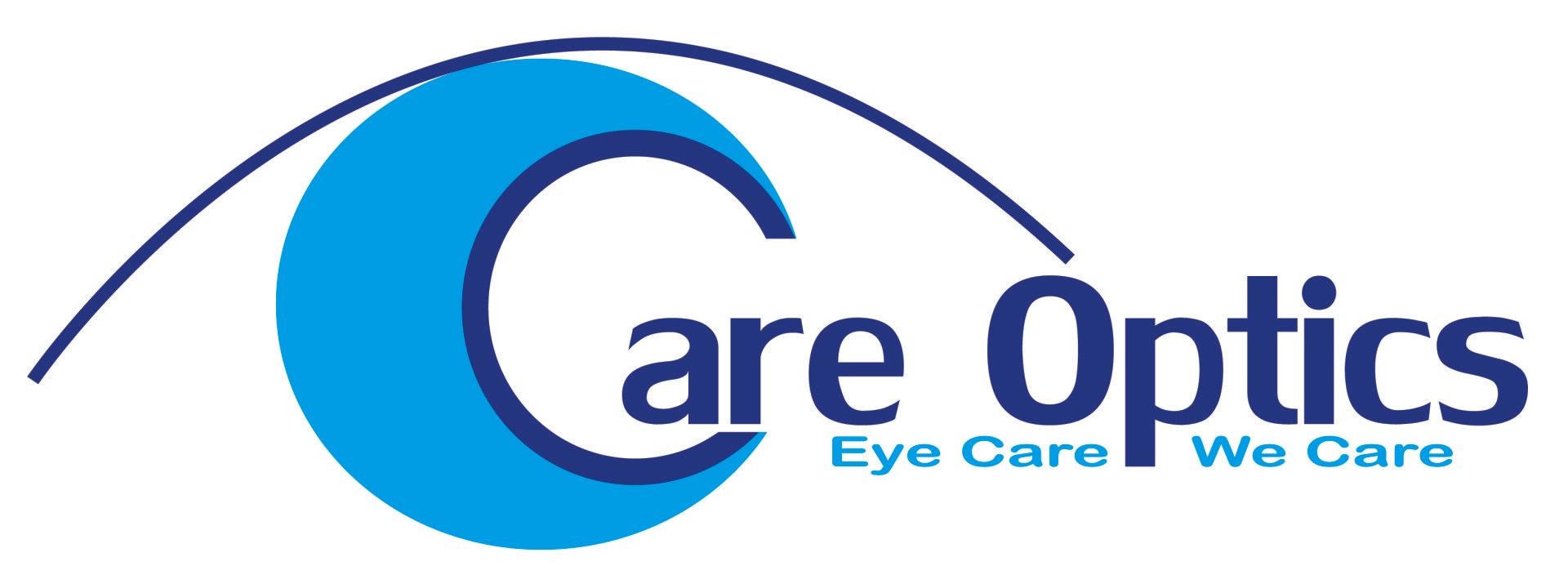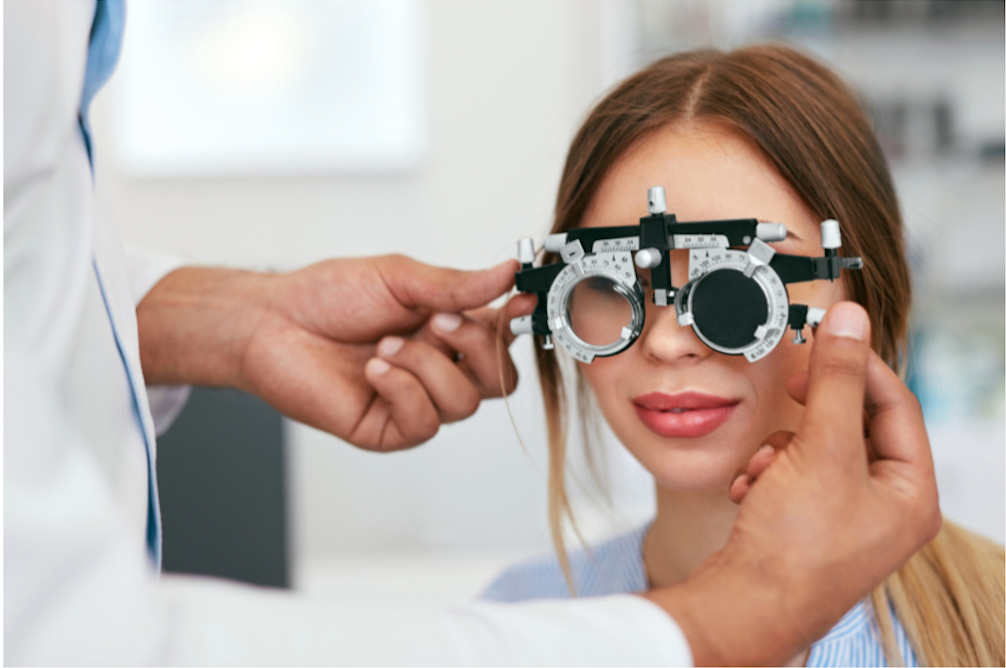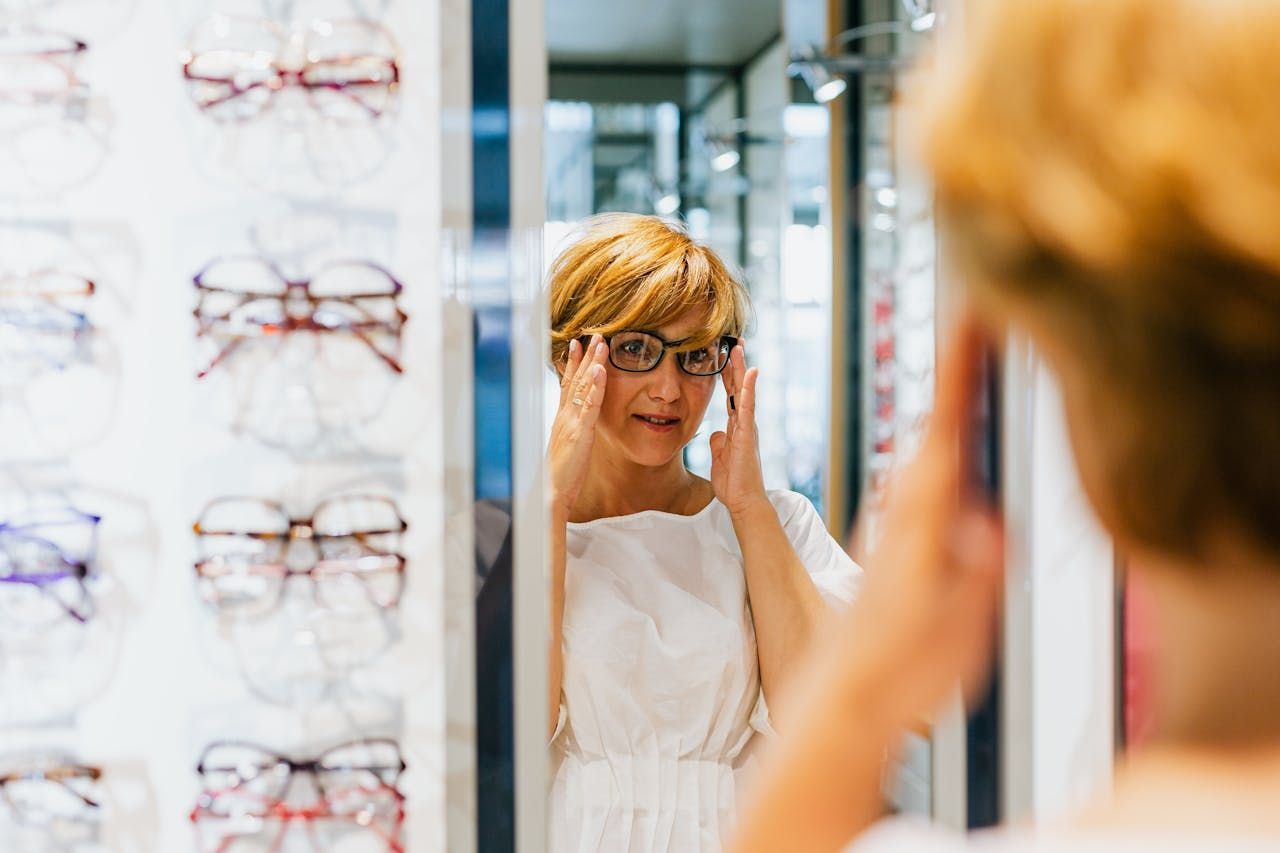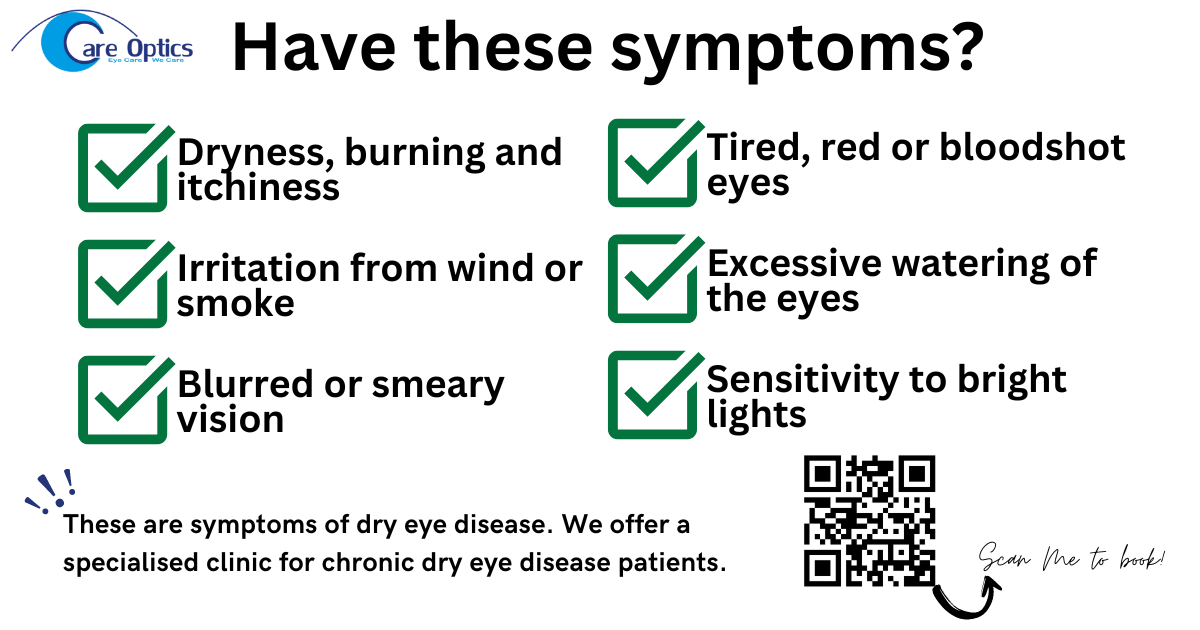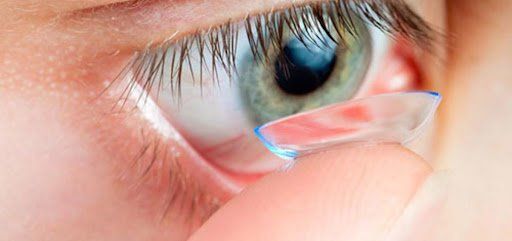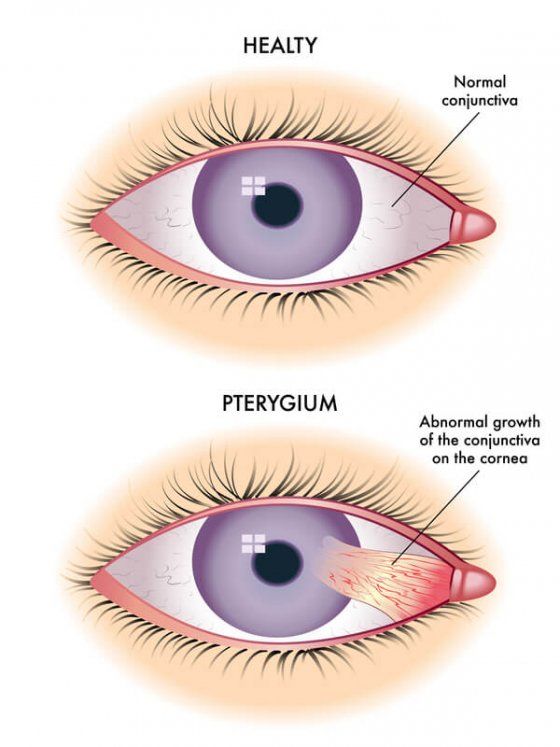
Causes
As written above, UV exposure seems to be one of the main reasons for Pterygium development, but wind and dust can also cause it as this leads to Dry Eye Disease, which by consequence will lead to this condition. Genetics may also play an important part, as some people seem to be more at risk than others.
Signs & Symptoms
Pterygium usually appears on the side of your eye that is closest to the nose, but it can also appear on the other sometimes. It is common to have it in one eye only, although sometimes it may appear on both eyes.
There are people who don't experience any symptoms or require treatment in the beginning, but as the growth develops, there can be redness, gritty, itchy or burning sensation, the eyes can become irritated and even swollen.
When the Pterygium starts to invade the cornea, it distorts the shape of the front of the eye, causing the curve of the cornea to change, leading then to refractive errors (Astigmatism in most cases).
Treatment
The treatment depends on the size of the Pterygium itself. If it's just a small growth, your Optometrist/Ophthalmologist can advise the patient on lubricants (eye drops or gels) to temporary reduce symptoms like redness, swelling, itchy or gritty felling.
If the Pterygium is more advanced, the only option is then surgery.
How to avoid it
As previously said, UV radiation and exposure seems to be one of the main reason leading to Pterygium. For that you have the perfect solution that is available for everyone - sunglasses . A good pair of sunglasses will filter the UV rays, giving you a sharper vision but also protecting you from conditions like Pterygium, Cataracts, Glaucoma, etc. Make sure to buy your sunglasses from a Optician instead of a shop non-related to eye care. A good pair of sunglasses should have UVA, UVB and UVC protection, and usually those shops will only have one of those protections - or even none.
We remind you that if you have any of these symptoms or any other, if you need to book an appointment or if you have any queries, please contact us over phone or email. We will be very happy to help you.
Keep in mind: At Care Optics - Eye Care, We Care

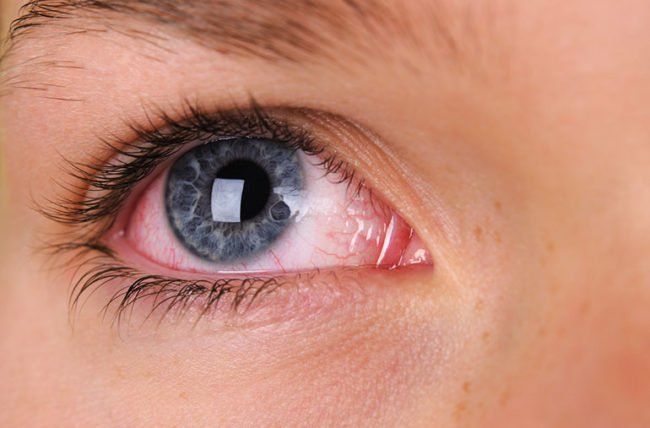
Conjunctivitis is a common condition which causes the surface of your eye to go red and, often, sticky or watery and your eye becomes sore.
Types of Conjunctivitis:
Conjunctivitis can be caused by infection from bacteria, viruses or other organisms, and also by allergy or inflammation.
Viral conjunctivitis tends to cause a watery red eye and can last for two to three weeks even with the correct treatment. In most cases viral conjunctivitis does not affect your vision but rarely you might notice your vision becomes blurry or you may see glare when looking at lights. This is due to an inflammatory reaction causing small white dots on the cornea, the transparent window at the front of the eye. These usually fade with time, but it can take a few weeks or even months.
Bacterial conjunctivitis is more likely to cause a red eye with a sticky yellow discharge.
I think I may have Conjunctivitis. What should I do?
There is no antiviral medication for viral conjunctivitis and it does not respond to antibiotic drops as it is not caused by bacteria. The best treatment for viral conjunctivitis is to use artificial tears and simple painkillers, with regular lid cleaning and cold compresses. The conjunctivitis disappears when your body becomes immune to the virus and fights the germs off, just as in a cold or flu. Very rarely, steroid drops are given for severe cases of viral conjunctivitis or when the cornea is affected.
Antibiotic drops can be helpful in cases of bacterial conjunctivitis and are often prescribed for a one or two-week course.
Contact lenses should not be worn during any type of conjunctivitis.
Infection control:Conjunctivitis is contagious and spreads very easily by water droplets (coughing, sneezing) or contact with tissues, flannels, towels, pillowcases and so on. For that reason, it’s really important to wash your hands frequently and dispose of tissues after use to prevent the condition from spreading to other family members or work colleagues.
In addition to proper hand hygiene, it's also important to avoid sharing personal items such as towels, pillowcases, and eye drops. If you have conjunctivitis, it's best to stay at home until the symptoms have subsided to avoid spreading the infection to others. Avoiding close contact with others, and avoiding touching or rubbing your eyes are also important to prevent the spread of infection. For people who wear contact lenses, it's essential to discard the lenses and switch to glasses until the infection is gone. After the infection is cleared, it's important to properly clean and disinfect the contact lenses and lens cases before reusing them.

What is Hayfever?
Hayfever, also known as allergic rhinitis, is a common allergy to pollen, dust or mould. It produces cold-like symptoms, such as a blocked or runny nose, sneezing, and itchiness.
What causes Hayfever?
Hayfever is caused by an allergic reaction to certain airborne allergens, such as pollen, mold, and dust mites. When these allergens come into contact with the lining of the nose and eyes, the immune system overreacts, releasing histamine and other chemicals that cause inflammation and symptoms such as sneezing, runny nose, and itchy eyes.
How does hay fever impact the eyes?
The classic sore eye associated with hayfever is called allergic conjunctivitis (to learn more about conjunctivitis, click here). This is an umbrella term for issues with the clear membrane covering the whites of the eyes and the eyelids. It can be rather unpleasant, but does not pose a risk to your vision. The itching sensation you feel is caused by pollen landing in the eye which leads to the release of histamine in turn irritating the nerve endings. The eyes become bloodshot because the blood vessels dilate and swell to fight off the irritant.
My vision is blurry!
Do not fear, this is very common. The blurriness you feel is associated with watery eyes. The tear ducts produce excess fluid to flush out the pollen, which can sometimes result in a thick gooey substance causing your vision to deteriorate temporarily. Try using a cold compress to ease the irritation, and if your symptoms persist book an appointment with us by following this link.
Will Hayfever go away?
From the start of Spring to the end of Summer hayfever sufferers will need to be extra vigilant. From late March until the middle of May, tree pollen peaks. From the middle of May until July, grass pollen peaks. And from the end of June until September, weed pollen is at its peak.
As 95% of hay ever sufferers are allergic to grass pollen, mid-May to July is the ‘peak time’ for hay ever. Unfortunately there is no cure, you just need to be extra vigilant and apply preventative measures. These include:
-
Take over the counter antihistamines.
-
Cut down on drinking alcohol during the summer months. It contains histamine, a chemical that promotes allergic reactions.
-
Keep your eyelids clean with the lid wipes available at our practice.
-
Take artificial tear drops to help flush out the pollen if your eyes are particularly irritated. You can find these at our practice too.
If you have any questions or concerns, call our practice to book an appointment by following the attached link.
